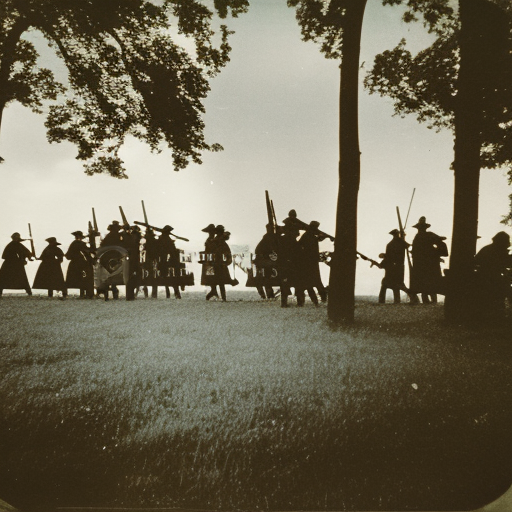The Hartford Convention (1814)
The Hartford Convention was a meeting of delegates from New England states that took place from December 15, 1814, to January 5, 1815, during the War of 1812 between the United States and Great Britain. The convention was held in Hartford, Connecticut, and its purpose was to discuss and address grievances that New England had with the federal government’s policies, particularly those related to the war.
Background
By 1814, the War of 1812 had been ongoing for two years and had taken a toll on the New England states. The region’s economy heavily relied on trade, and the war had disrupted maritime commerce, leading to economic decline. Additionally, the federal government’s policies, such as the Embargo Act of 1807 and the Non-Intercourse Act of 1809, had already strained relations between New England and the rest of the country.
Grievances and Demands
The delegates at the Hartford Convention had several grievances and demands that they wanted to address. They were particularly concerned about the economic impact of the war on New England and the potential for further encroachments on their rights and interests. Some of their main grievances included:
1. Trade Restrictions: New England states demanded compensation for the economic losses they had suffered due to trade restrictions imposed by the federal government.
2. Representation: Delegates expressed concerns about the balance of power between the states and the federal government. They proposed amendments to the Constitution that would limit the power of the federal government and protect the interests of the states.
3. War Measures: The convention called for limitations on the federal government’s ability to wage war, including requiring a two-thirds majority in Congress to declare war, enact embargoes, or admit new states.
4. Secession: While not explicitly stated in the convention’s resolutions, there were discussions about the possibility of secession if their demands were not met. However, the majority of delegates were not in favor of secession and instead sought constitutional reforms.
Outcome and Impact
The Hartford Convention’s resolutions were sent to Washington, D.C., but arrived after the Treaty of Ghent was signed, effectively ending the War of 1812. This timing rendered many of their demands moot. Furthermore, news of the American victory at the Battle of New Orleans, which occurred after the convention had begun, boosted national morale and diminished support for the convention’s grievances.
The Hartford Convention itself had a mixed impact. While it did not achieve its immediate goals, it did contribute to the growing discontent with the war and the federal government’s policies. The convention also highlighted the divisions between the New England states and the rest of the country, particularly the South and West.
Critics of the convention accused the delegates of being disloyal and even treasonous. The negative perception of the convention contributed to the decline of the Federalist Party, which was already losing support. The party’s association with the convention further weakened its influence and eventually led to its demise.
In the long term, the Hartford Convention had a lasting impact on American politics. It served as a catalyst for discussions about states’ rights, the balance of power between the states and the federal government, and the potential for secession. These debates would resurface in later years, particularly in the lead-up to the American Civil War.
In conclusion, the Hartford Convention of 1814 was a meeting of New England delegates during the War of 1812. The convention aimed to address grievances and demands related to the war and the federal government’s policies. While it did not achieve its immediate goals, the convention had a lasting impact on American politics, contributing to discussions about states’ rights and the balance of power between the states and the federal government.












